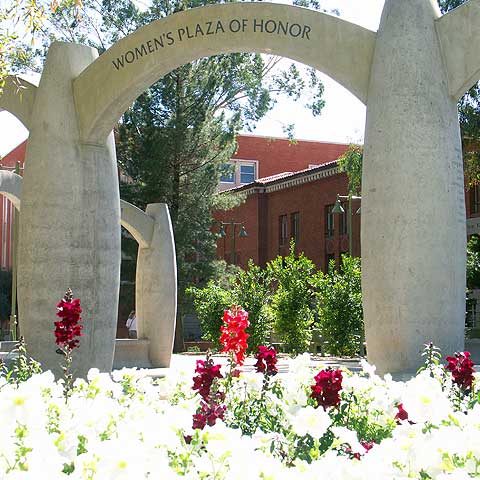March is Women’s History Month, and the 2016 theme, as stated in the title of this feature, is dedicated to honoring women in public service and government. This month typically features events and efforts to recognize and focus on the contributions of women and their “consistently overlooked and undervalued” roles in national and world history. The inroads and work of women in government and activism is sometimes missed and outright ignored, especially when their attention is focused on achieving actionable goals rather than recognition.
How This Celebration Evolved
Since 1921, International Women’s Day, meant to honor the contributions of women throughout history and acknowledge women’s continuing struggle for recognition and rights, has been celebrated on March 8, though the day had been celebrated for a decade prior on March 19, before being changed. As early as the 70s, schools in the U.S. have been examining women’s history, issues, and contributions throughout the month of March. In 1987, Congress designated this month to observe and recognize the many accomplishments of women to American history, specifically.
The National Women’s History Project, which played a significant role in expanding observance of National Women’s History Week (established in 1981) to an entire month, is honoring 16 women in government, the judiciary, active in political activism, and instrumental in making the U.S. “a stronger and more democratic country.” These women and so many others have helped shape this country and the world through their contributions and achievements.
Remarkable Women

Source: www.womensplaza.arizona.edu
“Women’s history is often limited by focusing on famous people,” says Elizabeth Lapovsky Kennedy, Ph.D., Professor of Women’s Studies and English at the University of Arizona. Kennedy suggested the idea of the University of Arizona’s Women’s Plaza of Honor as a living memorial to women past, present, and future because she knows well that the stories of women’s history are still being written and cover a span of experience. According to Lapovsky Kennedy, there is a continuum still in play today that leads to historical moments, such as Sandra Day O’Connor and Sonia Sotomayor’s appointments to the Supreme Court.
Keeping Lapovsky Kennedy’s quote in mind, below are a few women, mostly Arizonans, who embody this spirit of service and achievement, including politicians, artists, scientists, and community leaders.
- Ella Gloria Narcho Rumley was a wife, soldier, mother, and activist who campaigned tirelessly for the equal rights and needs of Tucson-area native peoples. Friends said, “Ella knew injustice when it was dished out and she stood up to it her entire life.”1 To many, she was “best remembered for her endless devotion to the needs of off-reservation members of the Tohono O’odham tribe.”2 Rumley was involved in community government in Tucson and beyond.
- Sister Kathleen Clark established the first child crisis nursery in the nation here in Arizona. Casa de los Niños housed more than 32,000 neglected, abused, and uncared for children in its first three decades. Her legacy lives on in the work of this valuable institution that continues her mission to prevent child abuse and neglect.
- Jessie Harper Linde worked tirelessly to bring top-level actors, dancers, and musicians to Arizona. She campaigned for a concert hall and sponsored more than 750 programs in Phoenix. She promoted non-segregated performances throughout the area, including bringing performers to the Navajo Civic Centers, where shows always sold out.
- Isabella Greenway made her name through activities in the business and civic sectors in Tucson. She also served as Arizona’s Democratic National Committeewoman and was the state campaign chairman for Franklin Delano Roosevelt. After winning a special Congressional election, she became the state’s first congresswoman; when it came time for reelection, she won by an overwhelming majority.
- Luci Tapahonso is the first and current poet of the Navajo nation. This poet writes in her tribe’s native tongue, which brings a strong rhythm to her English translations of her work. Some of her many writings, including numerous books and dozens of anthologies, feature original songs and chants designed for performance. She is a lecturer in Native American Studies programs at the University of Arizona in Tucson, and has taught in New Mexico and at the University of Kansas.
- Sandra Day O’Connor is well-known for her appointment as the first female justice of the Supreme Court of the United States. Prior to her appointment, she served as a judge in Arizona and as an elected official—she served as the first female Majority Leader in the U.S. as the Arizona Senate’s Republican leader. In 1981, she was unanimously confirmed as a justice by the U.S. Senate. Twenty-eight years later, in 2009, O’Connor was presented with the Presidential Medal of Freedom by President Barack Obama.
- Nancy Grace Roman, who was the first woman executive at the National Aeronautics and Space Administration (NASA), is an astronomer and became known as the “Mother of Hubble” because of her work on the Hubble Space Telescope. She spent 21 years at NASA and has long been an advocate for women in the sciences.
These women and others have contributed to our state and our nation in recent decades, but they are only a few of many who have served communities here and abroad in various ways to make inroads in equality and democracy.
More Resources
- National Women’s History Project
- National Women’s Hall of Fame
- Arizona Women’s Hall of Fame
- University of Arizona’s Women’s Plaza of Honor
- Rutgers University: Center for Women’s Global Leadership
- History Channel: Women’s History Month
- National Constitution Center’s Women’s History Month Page
- U.S. Census Bureau’s Facts for Features: Women’s History Month: March 2016
1 Allen, Paul, L. “Obituary: Ella Rumley, Tohono O’odham activist.” Tucson Citizen. 24 Jul 2004.
2 Ibid.

